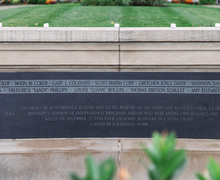Relaxing research
The ability to adjust the environment around a workspace, how it increases productivity and how it can be done in an environmentally friendly way is currently being researched at Syracuse University’s recently dedicated Center of Excellence.
‘There is an accumulation of evidence that shows when individuals are given the ability to control their own environment, they are happier and more productive,’ said Ezzat Khalifa, a professor of mechanical and aerospace engineering at SU and the director of the New York Strategically Targeted Academic Research Center for Environmental Quality Systems.
The researchers at the Center of Excellence’s Carrier Total Indoor Environmental Quality Laboratory will set participants up in situations that replicate daily work life. The experiments will measure how factors such as temperature, air quality, humidity and air flow affect workers’ productivity and how these adjustments can be made to consume the least amount of energy. Because research has just begun, there are not yet results.
The laboratory is split into two spaces. Researchers will set up a room where participants will be able to adjust their individual environments, while the other room has a preset environment.
Researchers will measure productivity differently, depending on the type of task they are asked to perform while in the room. For example, if participants are processing insurance, their performance can be measured quantitatively, Khalifa said.
Although most indoor environments, like offices, have predetermined conditions, as many as one-third of the people in that environment will be unhappy with those settings due to psychological differences and unsymmetrical rooms, Khalifa said.
To determine if the adjustable rooms are practical and can reduce energy use, Khalifa has also conducted experiments around the world, including in Denmark, Japan and Singapore.
He tested different factors, such as where people are sitting, doing work, wearing summer clothes or wearing winter clothes in order to determine an efficient way to minimize energy consumption and maximize productivity.
When two adjacent cubicles with two individuals customizing their own settings have differing temperature preferences, energy consumption can be minimized by bringing one level of temperature down to the lowest that occupant can tolerate and raising the adjacent cubicle’s temperature to the highest they can tolerate, Khalifa said.
Khalifa said he hopes his research will expand beyond office space into environments like cars and airplanes. Some cars already have something similar to what he would like with the feature of separate control of air-conditioning and heating on the driver’s side and passenger’s side.
The next step in Khalifa’s research will be to assess the efficiency of ventilation systems, he said.
Published on March 9, 2010 at 12:00 pm





